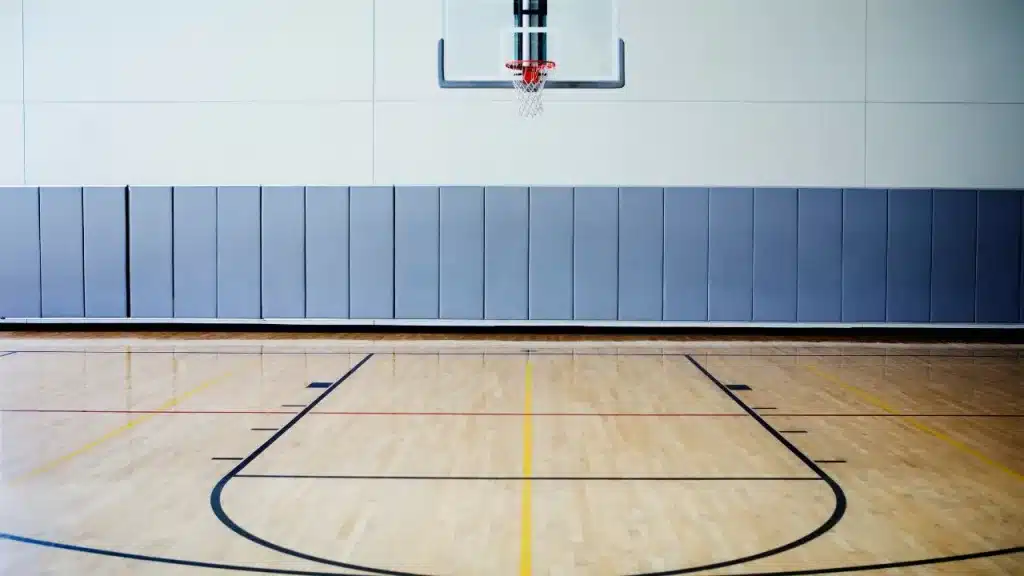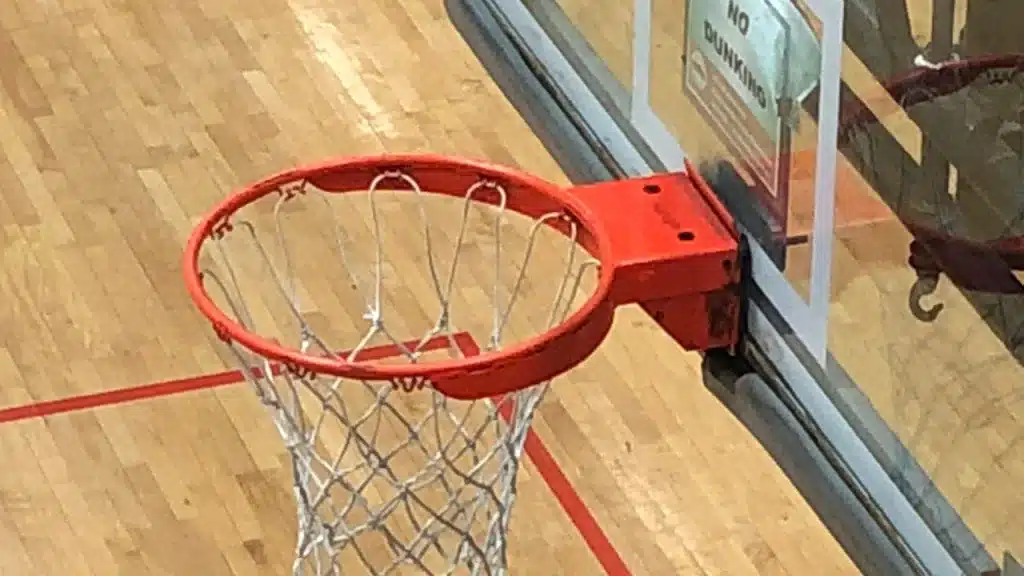Last Updated on: 11th December 2023, 10:55 pm
Building indoor basketball courts can be a dream come true for basketball enthusiasts. Whether it’s for personal use, training, or even hosting small tournaments, having an indoor basketball court can provide a convenient and comfortable space to play the game. However, building an indoor basketball court can be a challenging and expensive project, requiring careful planning and execution.
The first step in building an indoor basketball court is to determine the available space. The ideal space for a half-court is 30 feet by 35 feet, while a full-court requires at least 60 feet by 84 feet. Once the space is determined, the next step is to consider the flooring. Hardwood is the most common and preferred option for basketball courts, but it can be expensive. Other options include rubber or synthetic flooring, which are more affordable but may not provide the same level of performance and durability as hardwood. Additionally, the ceiling height must be considered to ensure proper clearance for the basketball hoop.
Overall, building an indoor basketball court requires careful planning and consideration of various factors. From the available space to the flooring and ceiling height, every detail must be considered to ensure a safe and enjoyable playing experience. With the right preparation and execution, building an indoor basketball court can be a rewarding investment for any basketball enthusiast.
Building Indoor Basketball Court Planning and Preparation
Before building an indoor basketball court, it is essential to have a solid plan in place. This section will cover the key aspects of planning and preparation, including budgeting, measuring the space, choosing the right flooring, and ensuring proper lighting and ventilation.
Budgeting And Cost
The first step in planning an indoor basketball court is establishing a budget. The cost of building an indoor court can vary greatly depending on the space size, type of flooring, and other factors. It is important to set a realistic budget and stick to it throughout the project.
Measuring the Space
Once a budget has been set, the next step is to measure the space where the court will be built. It is important to ensure enough room for the court and any necessary equipment. The standard size for a full basketball court is 94 feet by 50 feet, but smaller courts can be built for those with limited space.
Choosing the Right Flooring
Choosing the right flooring is crucial for an indoor basketball court. The flooring should provide good traction and shock absorption to prevent injuries. Hardwood flooring is the most popular choice for indoor basketball courts, but other options, such as rubber or synthetic flooring, can also be used.
Lighting and Ventilation
Proper lighting and ventilation are important for creating a safe and comfortable player environment. Adequate lighting is necessary to ensure that the court is well-lit and free from shadows, while proper ventilation is necessary to prevent the buildup of heat and moisture.
Planning and preparation are crucial steps in building indoor basketball courts. Establishing a budget, measuring the space, choosing the right flooring, and ensuring proper lighting and ventilation are key factors to consider. By taking these steps, builders can create a safe and enjoyable space for basketball enthusiasts of all levels.

Construction
Building an indoor basketball court requires careful planning and execution. The following sub-sections will provide an overview of the main steps involved in the construction process.
Framing and Wall Installation
The first step in building an indoor basketball court is to frame the space and install the walls. This involves measuring and marking out the court’s dimensions and then building a frame using lumber and other materials. Once the frame is complete, the walls can be installed using drywall or other materials.
Flooring Installation
The next step is to install the flooring for the basketball court. The ideal flooring for an indoor basketball court is a hardwood surface, which provides excellent traction and durability. A professional should install the flooring to ensure it is level and free from defects or imperfections.
Hoop and Backboard Installation
Once the flooring is in place, installing the hoop and backboard is next. This involves attaching the backboard to the wall and mounting the hoop onto the backboard. The hoop should securely fasten to the backboard to prevent accidents or injuries.
Finishing Touches
Finally, the finishing touches can be added to the indoor basketball court. This may include painting the walls and adding any necessary markings or lines to the court. The court should also be equipped with appropriate lighting and ventilation to ensure it is safe and comfortable.
In summary, building an indoor basketball court requires careful planning and execution. Following the steps outlined above, it is possible to create a safe and functional space for playing basketball indoors.

Equipment and Accessories
When building an indoor basketball court, it is important to consider the necessary equipment and accessories to make the court functional and enjoyable for players and spectators alike. Here are some essential items to consider:
Basketballs
Basketballs are the most important equipment for any basketball court. It is recommended to have at least 6-8 basketballs available, with a mix of sizes and types depending on the age and skill level of the players. For example, younger players may benefit from smaller and lighter basketballs, while older players may prefer full-size basketballs.
Ball Racks
Ball racks are a great way to keep basketballs organized and easily accessible. They come in various sizes and styles, including wall-mounted and freestanding options. It is recommended to have at least one ball rack near the court for easy access during games and practices.
Scoreboards
Scoreboards are a great addition to any indoor basketball court, as they allow players and spectators to keep track of the score and time remaining. There are various types of scoreboards available, including electronic and manual options. Electronic scoreboards are more expensive but offer more features and are easier to use.
Seating
Seating is an important consideration for spectators who will be watching games or practices. It is recommended to have enough seating for all expected spectators, with options for both standing and sitting. Bleachers are a popular choice for indoor basketball courts, but chairs and benches can also be used.
Storage
Storage is essential for keeping equipment and accessories organized and easily accessible. It is recommended to have storage options for basketballs, ball racks, scoreboards, and other accessories. Cabinets, shelves, and lockers are all great options for indoor basketball court storage.
In summary, when building an indoor basketball court, it is important to consider the necessary equipment and accessories to make the court functional and enjoyable for players and spectators. Basketballs, ball racks, scoreboards, seating, and storage are all essential items to consider.
Maintenance and Safety
Cleaning and Maintenance Tips
Regular cleaning and maintenance of an indoor basketball court can help extend its lifespan and prevent injuries. Here are some tips to keep the court in top condition:
- Sweep the court daily to remove dirt, dust, and debris. Use a soft-bristled broom to avoid scratching the surface.
- Mop the court with a damp mop once a week to remove any stubborn dirt or stains. Avoid using harsh chemicals or abrasive cleaning tools that can damage the surface.
- Inspect the court regularly for any signs of damage, such as cracks, dents, or loose tiles. Repair or replace any damaged areas immediately to prevent accidents.
- Keep the court dry at all times to prevent slips and falls. Use a dehumidifier or air conditioner to control the humidity level in the room.
Safety Precautions
Indoor basketball courts can be dangerous if proper safety precautions are not taken. Here are some tips to ensure a safe playing environment:
- Install safety padding on the walls and support columns to prevent injuries from collisions.
- Ensure that the court is well-lit to avoid tripping hazards and improve visibility during gameplay.
- Provide players with proper footwear to prevent slips and falls. Avoid playing in socks or bare feet.
- Set rules and guidelines for gameplay to prevent dangerous plays and collisions.
Emergency Procedures
Despite taking all the necessary precautions, accidents can still happen. Here are some emergency procedures to follow in case of an injury:
- Keep a first aid kit on hand that includes bandages, disinfectant, and other essential items.
- Call 911 immediately in case of a serious injury or medical emergency.
- Have an emergency action plan in place that outlines the steps to follow in case of an injury or emergency situation.
- Train all players, coaches, and staff on the emergency procedures to ensure a quick and effective response.
